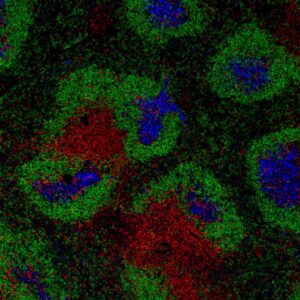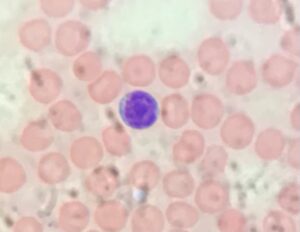Views 868
Everything was silent. There was nothing to fear. Your body was working fine, no virus or dangerous bacteria roaming around. It was like a quiet summer day until one of your internal fighters decided to attack and kill some of your healthy cells. But it doesn’t stop there. The death of these cells starts a “fire”.
The “fire” is now spreading inside your body, telling the other fighters to join this battle. A battle that shouldn’t have started in the first place. Soon enough, you begin to feel sick. You are now developing an autoimmune disease, which happens when your immune system attacks your own healthy cells.
Well, Stefanie, that doesn’t sound very pleasant. Tell me that there is a way to prevent this!

T regulatory cells: the firefighters of the immune system
Illustration by Kim Millar
Yes, luckily, our immune system is AMAZING, INCREDIBLE, THE BEST SYSTEM EVER (ok, I will stop now), and it put in place many different processes to prevent mistakes like this from happening.
If you have read a few of my posts, you might already think about a few ways our immune system can do that. But today, I decided to talk about one of my new obsessions. The T regulatory (Treg) cells. These incredible cells are important to maintaining a balance inside our bodies by extinguishing “fires” and stopping a battle whenever we don’t need them to occur.
Although I’m nowhere near a Treg expert, I am learning a lot about these cells lately as I embarked on a new adventure at the Massachusetts General Hospital at Harvard University as a Ph.D. exchange student at Dr. Mempel’s laboratory. So here it goes. Let me tell you a story about your new favourite immune hero.
You have heard me talking about the soldiers of the immune system, those cells inside our bodies constantly waiting to fight any threats. Great, we need these. These cells have one big life goal: detect harm and destroy the threat. But it is like anything in life, too much of something is never good. This killing must be regulated somehow, and here is where our T regulatory cells play an essential role (did you see what I did there?!)
To understand how these cells regulate an immune response, let’s first focus on how T cells “find” a threat.
As you might recall, T cells have a receptor on their surface, which you can think about as a lock that can only open with the correct key. In a very simplistic view, we want locks that only work with “keys” coming from a virus or bacteria. Once the “key” opens the “lock” (or when the small protein fragment coming from these microorganisms is recognized by the receptor on the surface of a T cell), it will send a message to this immune cell. A message that would “read” something like, “This is a threat. Prepare to go to war!”
A war that can never be won by a single immune cell. Therefore, this “war” comes with a lot of inflammation, which is one way our immune cells “spread the word” that a threat is present. Think about inflammation as a fire. As soon as a fire starts, we know our first responders will rush to help with this issue. So, as much as a fire is seen as bad, it is a good thing in this (not literally) context. This “fire” (inflammation) will bring many helping hands to the correct location.
But as I said, this is a very simplistic view, as we know that our immune system also generates T cells that can respond to keys (or small protein fragments proteins) found in our health organs (also known as self-proteins). Although you might already see the problem that can come with this process, our immune system is clever. These T cells are given a different “job”. Instead of a killing machine, these immune cells can become regulatory T cells.
So, once a T regulatory cell finds a key that “opens” its lock, the message sent to these cells would “read” something like, “This is not a threat; let’s try to regulate this reaction and stop the “fire” from spreading”.
There are many ways in which T regulatory cells can control an immune reaction. Each mechanism of action is cooler than the next, but I will keep the details for a future post. Still, together, these mechanisms aim to decrease inflammation (the “fire”) and stop any unwanted battles from continuing.
Because T regulatory cells are excellent at controlling inflammatory events, the absence of these cells has been shown to cause autoimmune diseases.
Cleverly, scientists are trying to harness the full potential of these regulatory T cells to generate treatments for those in need. Imagine if you could receive many of these T regulatory cells whenever your immune system goes a little crazy, starting fires and attacking your healthy organs. Wouldn’t that be cool? But more about it next time, because now I have an experiment to do and much more to learn!
Keep asking questions and seeking answers.
From your immunologist – in training,
Stefanie Valbon



